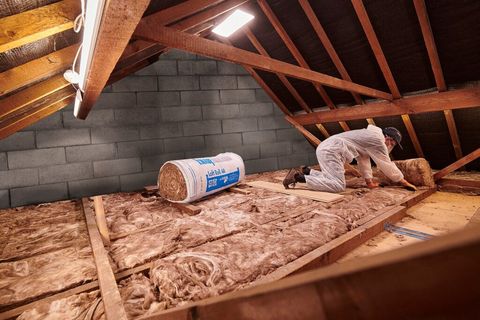Boneless Couch Knowledge Hub: Detailed Explanation, Facts, and Helpful Resources
A boneless couch is a type of seating designed without a fixed internal frame, unlike traditional sofas that rely on wood or metal structures for shape. Instead, this style uses flexible materials such as foam, bean filling, memory structures, or textile-based support systems. It exists to offer a soft, moldable seating option that adapts to the body’s natural posture.
These couches are often categorized under modular, frameless, or deformable furniture. While not entirely new, their popularity has grown as people seek alternatives to rigid, structured furniture. The lack of an internal frame allows for lightweight movement, easy repositioning, and adaptable comfort, making them suitable for living spaces, reading corners, and relaxed seating environments.
Boneless couches also align with modern interior preferences that prioritize minimalism, fluid design, and adaptable furniture. Because they follow body shape instead of forcing posture, they can support relaxed seating habits for casual rest, conversations, reading, or lounging.

Importance
Boneless couches matter today because they represent a shift in how people think about furniture and comfort. Their significance can be understood through several points:
-
Adaptable comfort: They adjust to body shape, making them useful for relaxed seating and lounging.
-
Lightweight structure: Without an internal frame, they are easy to move, rotate, or reshape within a room.
-
Soft interior materials: Foam-based and bean-based fillings can reduce pressure points compared to firm seating.
-
Space-flexible furniture: Ideal for small apartments, dorm setups, temporary living spaces, and multipurpose rooms.
-
Design flexibility: Their freeform shape can fit in informal environments or creative interior layouts.
The people who benefit most include students, renters, studio apartment owners, and individuals who prefer casual furniture over structured seating. They help solve the problem of rigid posture, limited space, and heavy furniture that is difficult to relocate or rearrange.
Recent Updates
Recent developments between 2024–2025 highlight evolving trends in boneless couch design:
-
Eco-foam filling (2024): Manufacturers are exploring recycled and plant-based foam alternatives to reduce waste.
-
Memory-reactive fill technology (2025): Materials that reshape more slowly to the body are emerging for long-form comfort.
-
Removable modular covers (2024): Designed for easy cleaning and interchangeable aesthetics.
-
Ergonomic research studies (2025): Increased attention toward spinal comfort, with ongoing analysis of long-term sitting posture.
-
Soft architecture interior design movement (2024–2025): An aesthetic trend favoring curved seating, soft forms, and relaxed room layouts.
Users consistently show interest in customizable softness, washable components, and neutral-toned upholstery that fits modern interiors. Industry conversations also highlight sustainable fillings and allergy-friendly fabric options as growing innovation areas.
Laws or Policies
Although boneless couches are informal furniture pieces, several regulations influence their materials and safety standards:
-
Fire safety and upholstery standards: Many countries require flame-resistant fabric or filling materials for indoor seating.
-
Chemical content regulations: Safety policies limit formaldehyde, heavy metals, and chemical flame retardants used in foam and fabrics.
-
Allergy-safe textile compliance: Some regions enforce hypoallergenic manufacturing standards for home furnishings.
-
Recycling and disposal policies: Sustainability rules encourage the use of recyclable materials and reduce landfill waste.
-
Labeling requirements for indoor furnishings: Many areas mandate sewn-in labels describing filling composition and safety details.
These policies ensure that boneless couches remain safe, durable, and environmentally responsible. Compliance frameworks vary by country, but quality assessment often includes flammability testing, textile certification, and filling material transparency.
Tools and Resources
Several tools and educational platforms can help users learn more about boneless couches, material types, and suitability for indoor environments:
-
Fabric durability rating tools: Websites provide comparison charts for textile strength and resistance.
-
Foam density measurement calculators: Used to estimate firmness and long-term compression response.
-
Interior layout planning apps: Digital room planners help visualize couch placement within floor plans.
-
Material comparison guides: Online resources that compare fillings such as memory foam, beads, latex, and recycled fiber.
-
Furniture maintenance checklists: Printable guides for washing covers, rotating cushions, and monitoring material wear.
Table below displays common material types used in frameless couches:
| Filling Material | Softness Level | Durability | Common Use Case |
|---|---|---|---|
| Memory Foam | Medium-Soft | High | Reading corners, long sitting sessions |
| Microfiber Beads | Very Soft | Moderate | Lounge seating, flexible shapes |
| Latex Foam | Medium-Firm | High | Supportive comfort for daily use |
| Recycled Fiber Fill | Soft | Variable | Sustainable furniture alternatives |
FAQs
What makes a boneless couch different from a traditional sofa?
A boneless couch does not have a fixed internal frame. Instead, it relies on flexible filling materials that shape themselves around the body when seated.
Is a boneless couch good for long-term sitting?
It is suitable for relaxed seating, but comfort levels depend on material density and design. Some people may prefer firmer support for extended daily use.
Are boneless couches easy to move?
Yes. Because they lack internal structure, they typically weigh less than standard sofas and can be shifted or molded to different areas easily.
Which filling is considered most supportive?
Memory foam and latex-based fillings generally provide the most consistent support over time, while bead-filled designs prioritize softness and flexibility.
How long does a boneless couch normally last?
Longevity varies with material quality, usage frequency, and maintenance. Regular rotation and proper fabric care can extend durability.
Conclusion
Boneless couches reflect modern preferences for flexible, soft-structured seating that adapts to personal comfort. Their frameless build allows them to mold naturally to the body while offering lightweight mobility and layout versatility. Recent material improvements—including memory foam innovations, eco-conscious production, and interchangeable cover systems—show that these couches continue to evolve with interior design trends.
With fire safety regulations, upholstery guidelines, and environmental policies shaping production standards, boneless couches remain an active category within household furniture. Understanding filling types, maintenance practices, and ergonomic considerations can help users make informed decisions when integrating this style into their living space.





